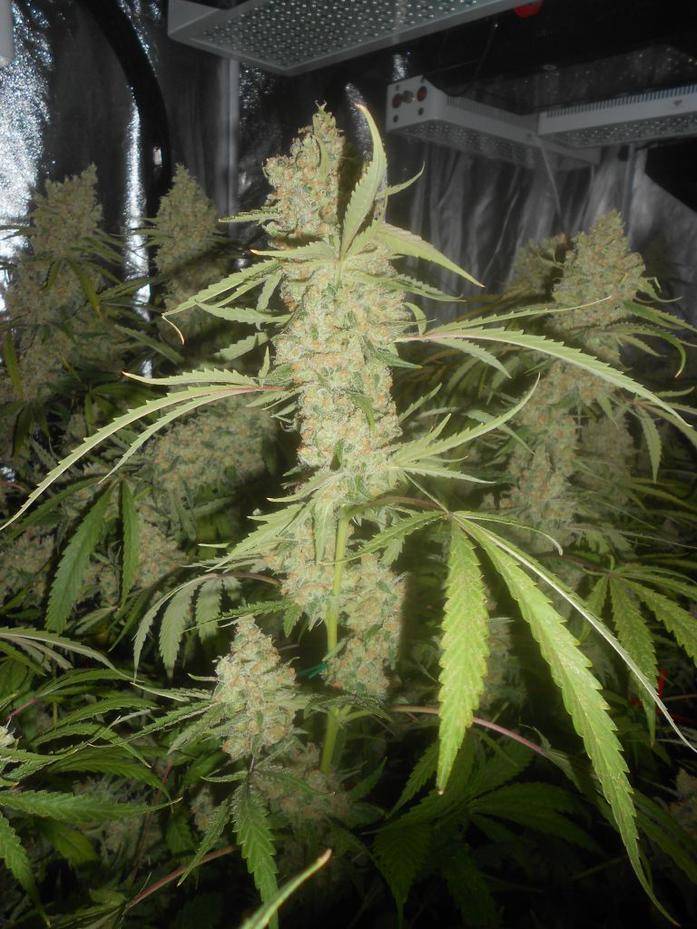Phychotron
Member
I dont mind doing the math, but lets do actual math not theoretical. Hell I bet if I actually put in the effort for that crop it'd be about a pound or two more. The one plant that I wasn't able to trim very well ended up doing 11 oz by itself, with the lower buds still nice and dense.
How many watts does it take to run a 600w bulb? Its going to take math and a meter to find out, but its a lot more than what is printed on your bulb box.

The reason HID sucks is because its primarily IR light that turns to heat on the surface of the leaf (and everything it touches.) It makes you have to lower the temperature below where the plants like it because it drives the cooling of the leaf. With LED you cut out having to radiate IR waves that transfer to heat which needs to be cooled off of every surface it touches. Instead you pump the heat out the top of the fixture and the plants can sit in the 80's where they like to be. Those HID bulbs crisp your leaves up.
How many watts does it take to run a 600w bulb? Its going to take math and a meter to find out, but its a lot more than what is printed on your bulb box.
The reason HID sucks is because its primarily IR light that turns to heat on the surface of the leaf (and everything it touches.) It makes you have to lower the temperature below where the plants like it because it drives the cooling of the leaf. With LED you cut out having to radiate IR waves that transfer to heat which needs to be cooled off of every surface it touches. Instead you pump the heat out the top of the fixture and the plants can sit in the 80's where they like to be. Those HID bulbs crisp your leaves up.



